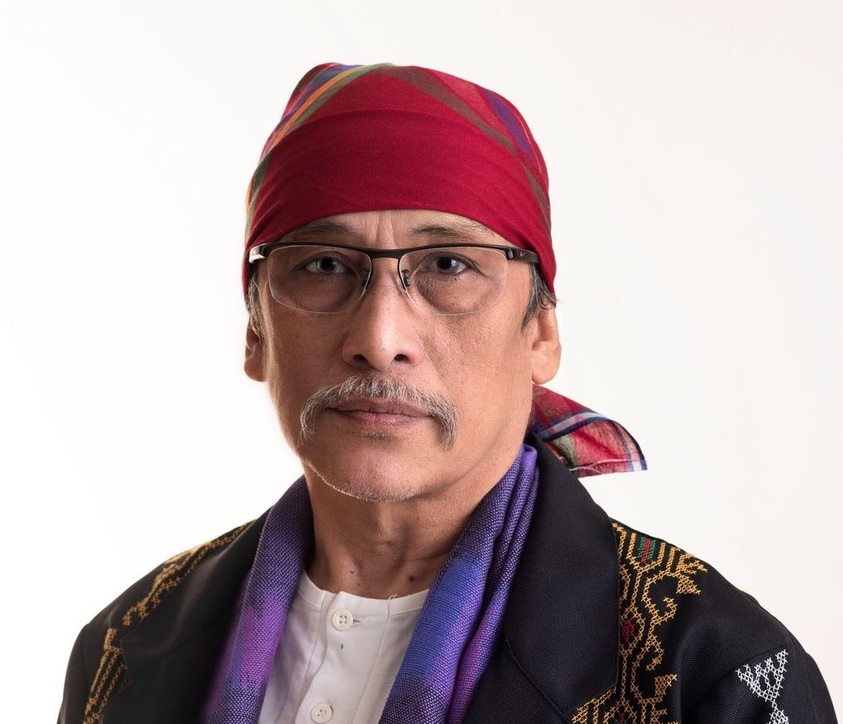Images courtesy of Ateneo Art Gallery, National Gallery of Singapore, National Commission for Culture and the Arts, and National Museum of the Philippines.
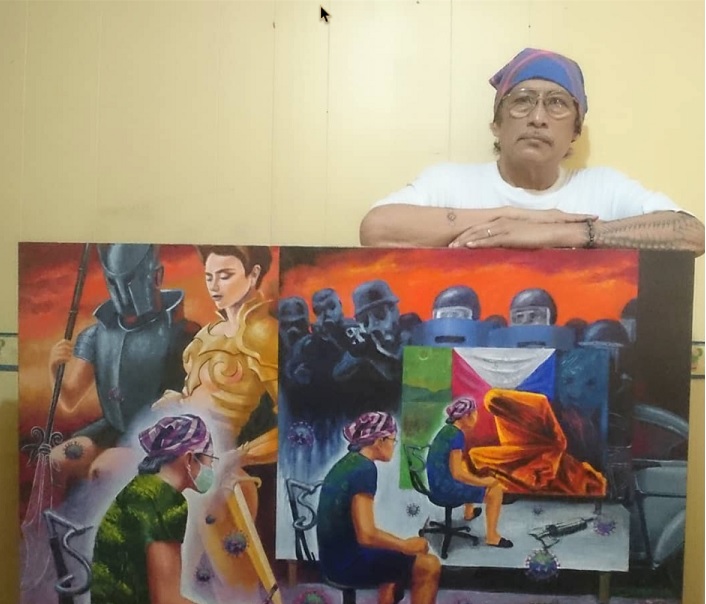
Egai Fernandez, one of the leading figures of Social Realism in the country, may be gone but his works live forever!
Selected works
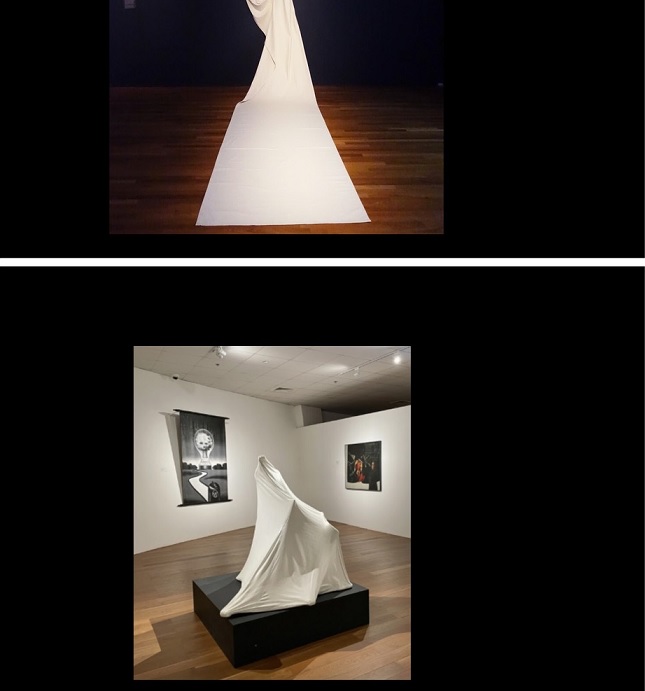
Kinupot (1977): An iconic sculpture made of canvas and wooden armature, with the title from the words “kinuha” (to take) and “sinupot” (to bag). It is a tribute to the victims of Martial Law, referencing the disappeared or missing persons of activists and youth leaders, whose fates remain unknown to this day.
Looking closely at the wooden framework artfully constructed underneath the canvas, one could discern the shapes of hands and feet, trapped human beings under the canvas. Fernandez had created other works using the same concept as Kinupot.
Fernandez had noted that when he was making Kinupot, he became strongly aware of the idea of life inside a mother’s womb, as his wife was pregnant with their first child then.
Kinupot was done intentionally in white, to represent the state’s whitewashing “of blood in their hands,” in contrast to the artist’s preference in using vivid colors.
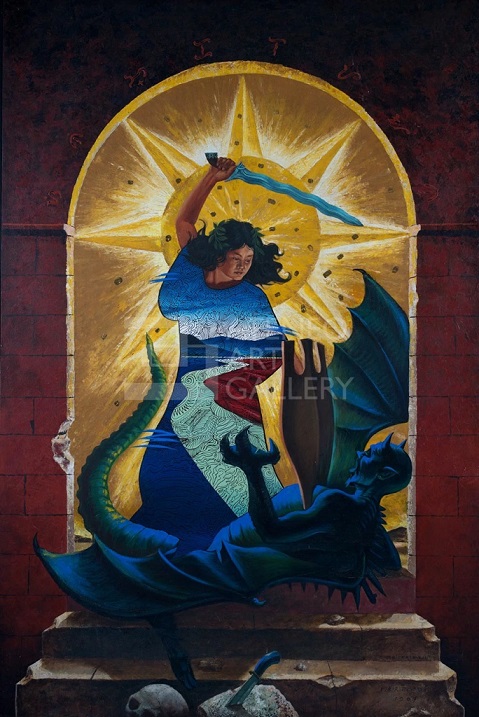
Sining Kalayaan (1987-1997): an oil and acrylic on canvas, it depicts the nation as Mother Philippines armed with the sword of courage and valor, ready to defend and slay all its enemies.
Paglalakbay: exhibited in 2016 at the NCCA Gallery, as part of the Sound of Silence (An Exhibition of Visual Narratives of Martial Law). It portrays Philippine history, from the arrivals of our ancestors in balangays, the Spanish colonial period, the Gomburza martyrs, the Marcos regime, Jabidah Massacre, Martial Law, and massive demonstrations. Different sectors of Philippine society are in upheaval, especially its indigenous peoples, all demanding justice and freedom.
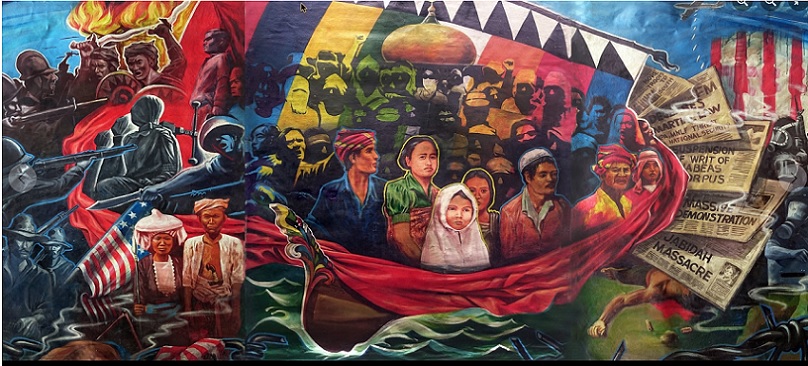
Lockdown Reflection (2020)
In early March 2020, Fernandez quarantined himself for three weeks in his house, and worked on a painting that he had started in 2007, titled Lockdown Reflection. A painting within a painting, the innermost and the smallest frame depicts the artist seated with a paintbrush, in front of a model reclining and hidden in an orange cloth. In the background a Philippine flag surrounded by armed men in gas masks.
On the upper left side of the painting, a well-dressed woman in ochre and a male figure in an armor suit holding a lance. On the lower right side, a model in PPE suit with facemask and goggles.
In every frame, the distinctive corona virus floats around as well as an ax and a bundle of sticks are on the floor of each frame.
In the last and the biggest frame, Fernandez is painted with a face mask, and his t-shirt and shorts painted in verdant green with images of forests and rivers.
Ang Tao
Last December 2023, Fernandez installed his work Ang Tao (1978, remade 2019) at the National Gallery of Singapore. As one of the Gallery’s recent acquisitions, it is part of a long-term exhibition, Between Declarations and Dreams: Art of Southeast Asia since the 19th Century.
Ang Tao refers to the political abductions and disappearances during Martial Law, referencing Kinupot (1977).
The artist
As a child, Fernandez was fond of drawing on the walls of their house, and even drew life-size chariots after seeing the film Ben-Hur. He learned drafting and painting as part of a vocational course in high school. Then, he enrolled at the Philippine Women’s University where he majored in advertising. His professors included Justin Nuyda (1944-2022) and Ibarra dela Rosa (1943-1998).
Initially, he was an abstract painter as seen in his first solo show in 1974, Give and Let Live, for the benefit of the Community Chest Fund Manila.
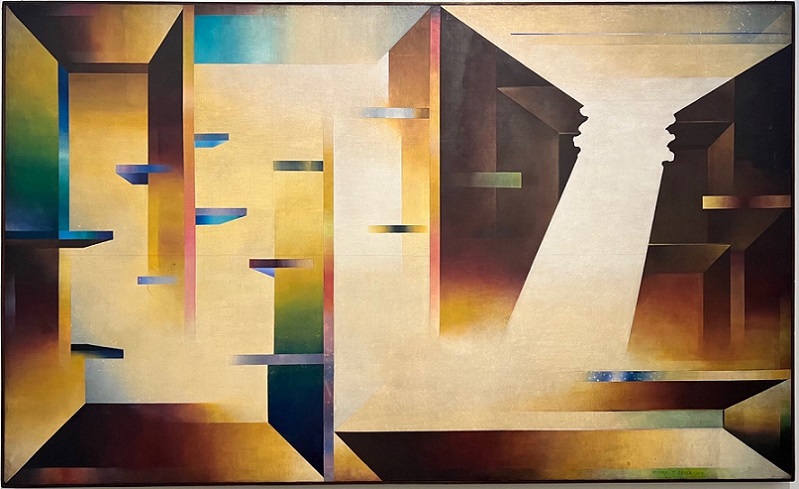
Since the 1970s, Fernandez had advocated for social and political changes in the country and confronted issues in his art practice related to human rights violations, abuse of power, and censorship— embarking on a new artistic style “…in dark as well as glowing colors. One that, in different variations, would be evident in the years and decades to come,” wrote Amadis Ma. Guerrero in his book, Philippine Social Realists (2019), which featured 10 Filipino artists practicing Social Realism, including Fernandez.
Often present in Fernandez’s art practice: a mother and child, a Filipino woman in native attire, Inang Bayan symbolizing the nation and its people, and the Philippine flag and its colors.
Amidst the socio-economic turbulence of the 1970s and 1980s, Fernandez had been active in the formation of artist collectives and organizations. He was a cofounder of Kaisahan (1975), an organization that aimed to address socio-political issues and strengthen national identity, and Artista ng Bayan (ABAY, 1985), and one of the founding members of the Concerned Artists of the Philippines (1983).
He received the Thirteen Artists Award, Cultural Center of the Philippines in 1990 and the Parangal Patnubay ng Sining at Kalikasan from the City of Manila in 2006.
